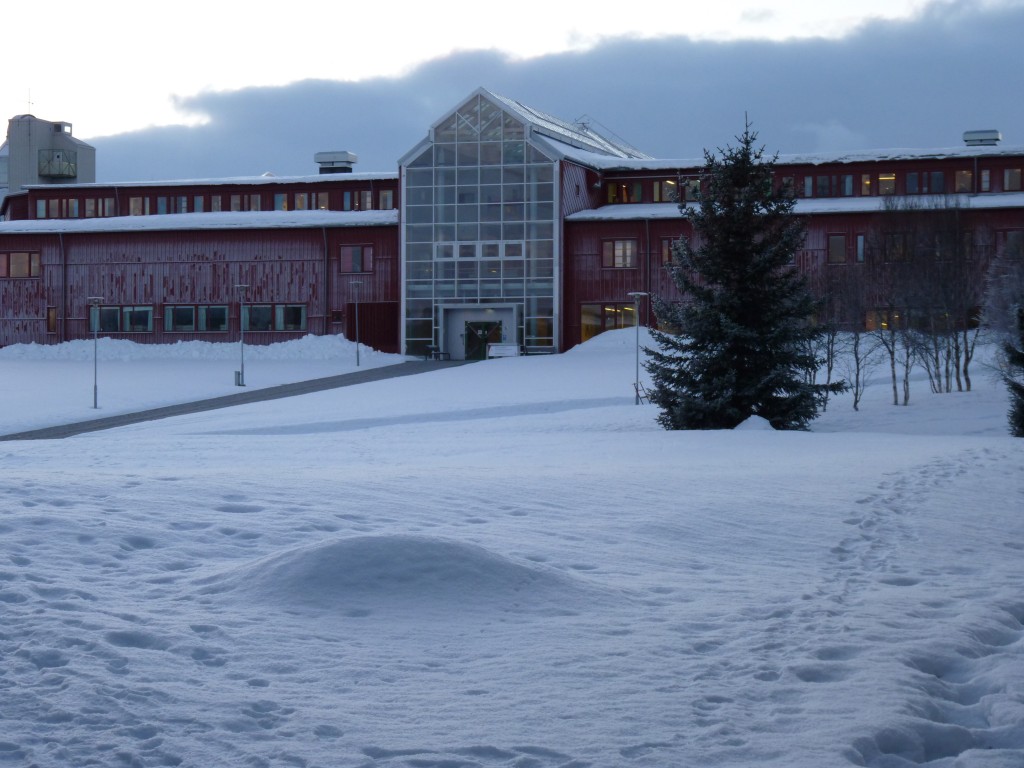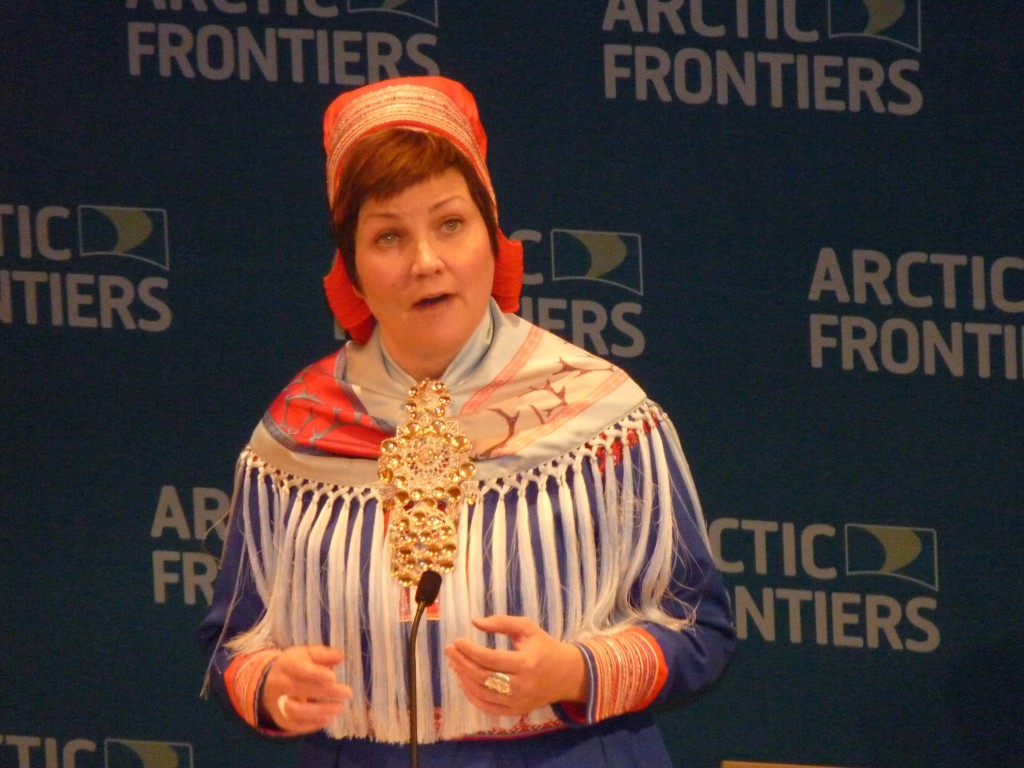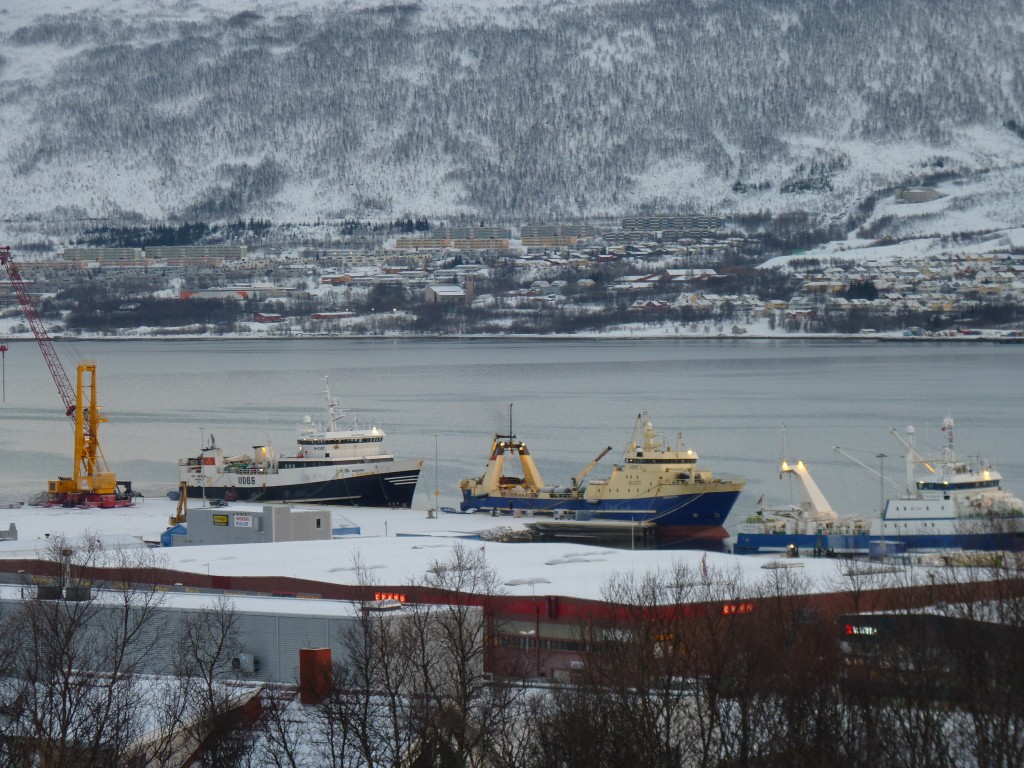Sustainable Future for Arctic people?
It has been a full day at Arctic Frontiers. This was day one of the two-day political segment (science follows from Wednesday). The main message seems to be that Arctic development is going full speed ahead. The Arctic Council (currently chaired by Canada) snd Arctic states will have their hands full in the years to come, coordinating that development and trying to make it sustainable and of benefit to the people of the High North. “Humans in the Arctic” is a very apt theme.
My impression after today’s events is that Sami and other indigenous people still feel a little out in the cold as the planet warms, the ice melts fast and development speeds up.
Aili Keskitalo President of the Norwegian Sami Parliament (and first female President of any Sami parliament) stressed in her opening address that the changes in the Arctic are clearly impacting living conditions for people in the High North. She mentioned health concerns influenced by climatic change, the accumulation of environmental toxins in food, changes in lievelihoods through new industries, pressure on traditional cultures having an impact on mental health. As indigenous peoples often live close to nature, they are in the front line of climatic change. Traditional industries like fishing, trapping, reindeer husbandry and strong ties to the landscape, imply additional vulnerability to industrial encroachment and other developments, she stressed.
Clearly, mining, oil exploration and the changes that come with them are a huge challenges for indigenous peoples. Challenges and opportunities were buzzwords in today’s sessions. How to help traditional indigenous communities benefit from the “opportunities” of development? Keskitalo stressed the need to respect the human rights of these communities when developing natural resources and changing the environment.
Other high-profile speakers (some more high profile than others – an indication of the priority allocated to the meeting by different Arctic states?) certainly went on a lot about opportunities and making sure the people of the High North get the benefit. But I couldn’t help wondering how much was lip service. This was backed up by informal chats with people in the breaks and some of the questions from the floor. But the proof of the pudding will be in the eating…
It was only in the final session of the day, a panel debate on the Northern Shipping Route, that an ngo representative, Nina Jensen, CEO of WWF Norge, was on the podium. I seem to remember more ngo active participation in earlier years. At that point in the meeting there was finally talk of dangers for rare species, black carbon increase, additional pollution from shipping through grey water, sewage, the danger of a spill of heavy fuel oil, invasive species in ballast water and such like. Yes, climate change-induced Arctic development brings with it not only opportunities but also risks and threats.
The debate was conducted mainly between Nina Jensen and Felix Tschudi, the Chairman of Tschudi Group shipping company, who was putting the industry point of view. Needless to say the two had differing opinions before, during and at the end of the debate. It would be surprising otherwise. It was mentioned during the day that the Polar Code negotiations might be successfully concluded in London this week. That, says Jensen, would be an important first step. But it would not solve all the problems.
This is a debate which will continue tomorrow – and, I have no doubt, well after the end of Arctic Frontiers. How compatible are economic development, environmental protection and the health and traditional cultures of indigenous groups in the Arctic?


















